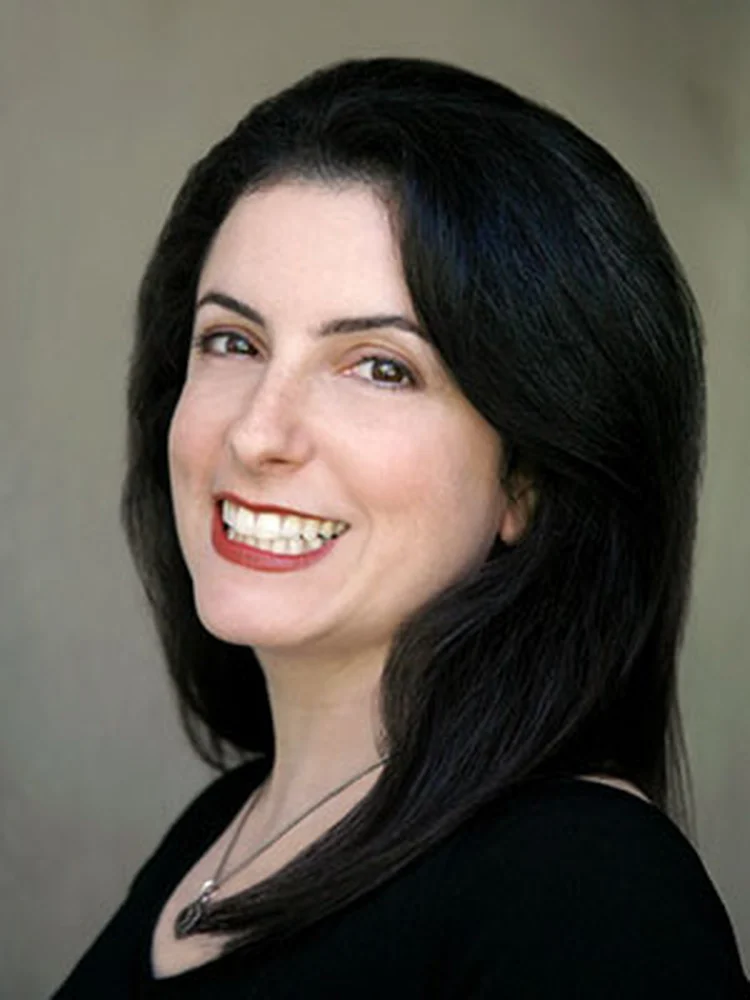
A wonderful collaboration took place on September 21, 2015, at the Krannert Art Museum in Champaign-Urbana. The UIUC Program in Jewish Culture and Society teamed up with the Krannert Art Museum (and benefactor Lorelei Rosenthal) to screen the dramatic, at times funny but always poignant, Jewish-themed 2015 BBC film, WOMAN IN GOLD, to frame its broader issues, and to provide the time and space to discuss the film as well as those broader issues. Both people who had not yet had a chance to see the film and some of us who gladly saw it for the second time watched the screening with great attentiveness. 50-60 people were in the audience at the KAM that evening.
The Jewish Studies Program invited Professor Lisa Silverman, a historian at the University of Wisconsin-Milwaukee, to frame the movie before the screening and to make some remarks as well afterwards, along with new KAM Curator of European and American Art, Maureen Warren. Professor Silverman's insightful 30-minute lecture focused on the broader range of issues raised by WOMAN IN GOLD and helped viewers reflect on what they were about to see. An expert on Austria and Austria's Jewish community both before and during WWII, Professor Silverman asked us to think about the nature of art as property, the processes by which specific objects are accorded special affection and meaning, and even the question of what happens when a particular art object gets re-framed as a national treasure (even though it requires silencing of important aspects of its production and the people who appear in it).
Professor Silverman was terrific in speaking to a broad and interested audience, and we were delighted to get such an appropriate and knowledgeable scholar to join us. Author of Becoming Austrians: Jews and Culture between the World Wars(published by Oxford University Press in 2012) and Co-Editor of both Interwar Vienna(2009) and Holocaust Representations in History(2015), Professor Silverman helped us all think about the presence of Jews in the years preceding the Anschluss in 1938 and the need to understand Jewish experiences in Central Europe between the World Wars while simultaneously examining the devastating events that followed both during the Holocaust and its long aftermath.
For those who have not yet had the pleasure of watching WOMAN IN GOLD, consider how appropriate it is for the UIUC Program in Jewish Culture and Society and for the Jewish community in general to screen it and discuss it. The film is based on a true story. It is played primarily by Helen Mirren and Ryan Reynolds. It recounts the fascinating emotional, political, and legal battles that ensued when Maria Altmann, an elderly Jewish woman then living in southern California, attempted to reclaim family possessions seized by the Nazis, in particular a famous portrait of Maria's beloved Aunt Adele that had been painted by Gustav Klimt and named by him "Portrait of Adele Bloch-Bauer." That this painting had already become a national treasure in post-war Austria and largely re-named WOMAN IN GOLD is quite relevant to the story. It was, however, a stolen painting and the legal battle to reclaim it makes for a dramatic, engaging, and important story. The film was released in the U.S. on April 1, 2015, directed by Simon Curtis, and produced by BBC Films but it is being premiered and screened at different times and in different places (including in Fall 2015 in Milan, Italy). Alexi Kaye Campbell wrote the screenplay, and Helen Mirren delivers an inspired, compassionate, and deeply appealing rendition of the lead character, Maria Altmann, who frequently pushed and pulled the young lawyer, himself the grandson of Arnold Schoenberg, the Austrian (or Austrian-American) Jewish composer, a point that becomes more and more relevant as the film goes on.
Of course, Klimt's "Portrait of Adele Bloch-Bauer" (a.k.a. WOMAN IN GOLD) makes for a dramatic story with far deeper and greater implications for Austria, for the Jewish community worldwide, and for art. That painting is but one of many thousands of objects confiscated by the Nazis and still held in vaults and other locations in Austria. Sometimes the problem is that there are no clear descendants who can fight the fight Maria Altmann and Randy Schoenberg fought (and that Helen Mirren and Ryan Reynolds depict in this film). And sometimes the problem is more closely related to what we see in this film and that Professor Lisa Silverman wanted the KAM audience to contemplate as well. When objects come to have special meaning for people--in this case post-war Austrians--the actual provenance of those objects can easily become backgrounded so that the violence connected to them is no longer in the public eye. Some people prefer to just forget. Some people believe that it is too difficult and costly to fight the fight--that is, to put the spotlight on those issues and that history--but it is clear that Simon Curtis, BBC Films, Helen Mirren, and Ryan Reynolds do not agree and that this film, WOMAN IN GOLD, wants us to remember.
Lastly, many people--both those present on September 21 and those unable to be present--relate to this story in multiple ways, including at times in deeply personal ways. At a very early dinner that day, always-thoughtful and engaged donor Lorelei Rosenthal recounted part of her own Austrian Jewish family's history, and those present could not help but make the connections to the film itself. In fact, endowment of this fund was clearly to honor the memory of her (and her family's) loving and devoted parents, grandparents, and great grandparents, and the legacy of their Austro-Hungarian heritage. As she explained to me a few days later, "My grandparents lived in the Austro-Hungarian Empire prior to the First World War and took an active part in the cultural, social and economic life of the times. But at the same time, they had the foresight to see what was on the horizon and fortunate enough to have opportunities waiting for them in the United States."